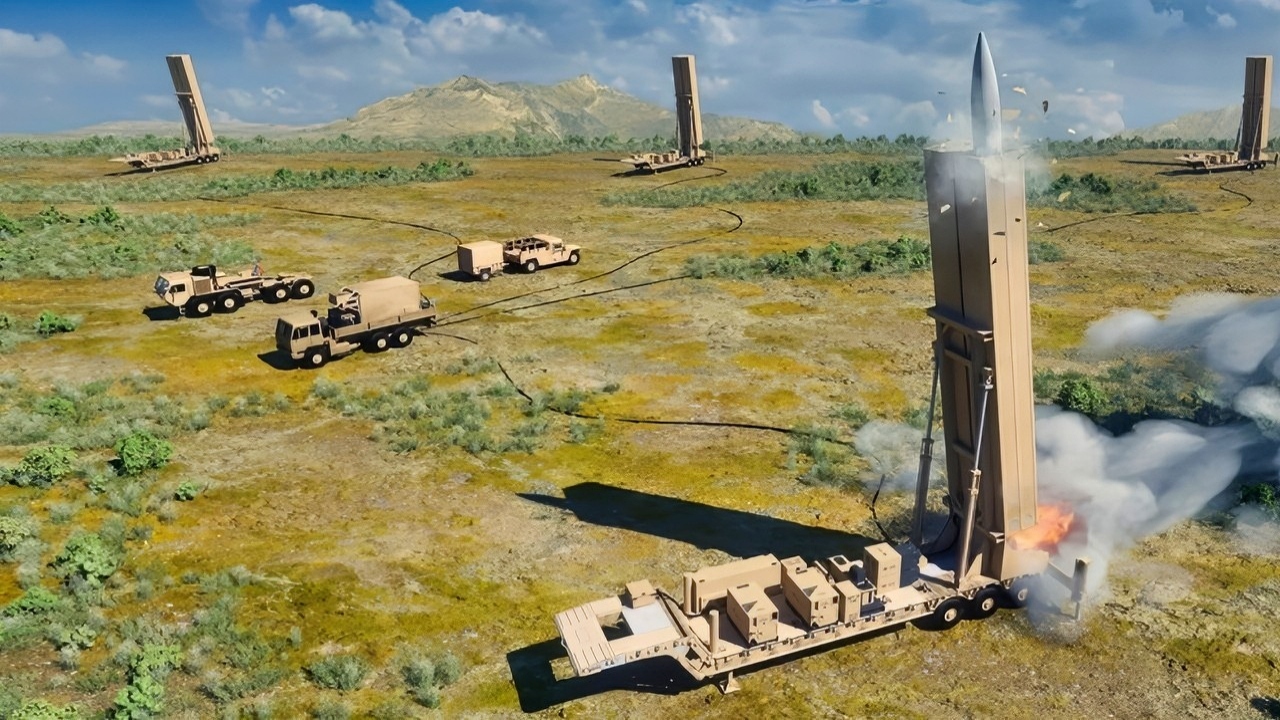Key Points and Summary – The U.S. Army has deployed its “Dark Eagle” ground-based hypersonic missile system overseas for the first time, sending it to Australia for the massive Talisman Sabre 2025 war games.
-This “major milestone” is a clear show of force aimed at China, demonstrating America’s ability to rapidly deploy its most advanced strike weapons into the Indo-Pacific region.
-The Dark Eagle missile, which travels at over Mach 5 with a range of 1,700 miles, is specifically designed to penetrate and defeat sophisticated anti-access/area denial (A2/AD) defenses like those protecting Chinese territory.
U.S. Deploys Dark Eagle Hypersonic Missiles Abroad For First Time
The U.S. Army has deployed its Long-Range Hypersonic Weapon (LRHW) system, known as Dark Eagle, to Australia, marking the first-ever overseas deployment of a U.S. ground-based hypersonic missile system.
The Hawaii-based 3rd Multi-Domain Task Force (3MDTF) transported the system to Australia’s Northern Territory as part of Exercise Talisman Sabre 2025, a massive U.S.-Australia war game designed to boost interoperability and signal the two nations’ military preparedness.
“The deployment of the LRHW system to Australia marks a significant achievement for U.S. Indo-Pacific Command, as it validates the Army’s ability to deploy, position, and exercise command and control (C2) of the system in a forward environment,” Adm. Samuel J. Paparo, Commander of U.S. Indo-Pacific Command said.
Paparo added that the exercise demonstrates the command’s “capacity to project power and support the defense of Australia,” which he described as a “key ally in the region.”
While this is the first operational deployment of a land-based hypersonic missile system outside the continental U.S., it is not the first overseas use of American hypersonic weapons. In March 2024, the U.S. Air Force tested its AGM-183A Air-launched Rapid Response Weapon (ARRW) from a B-52 bomber operating out of Guam.
However, ARRW was a test asset, not a deployed unit, and the program has since been canceled.
Each Dark Eagle battery includes four launchers capable of firing up to eight missiles, which can travel more than 1,700 miles at speeds exceeding Mach 5.
U.S. Demonstrates Preparedness Against Chinese Defenses
By deploying Dark Eagle to Australia, the U.S. is making clear it’s ready to base some of its most advanced strike systems closer to China.
The move reflects a growing willingness to bring cutting-edge weapons into the region, and could pave the way for future deployments in countries like Japan, the Philippines, or South Korea.
The weapon is designed not just for long-range strikes, but to specifically break through anti-access/area denial, or A2/AD, defenses. These layered systems consist of missiles, radar, and electronic warfare tools that large powers like China use to prevent foreign forces from operating freely in contested regions, particularly near Taiwan and the South China Sea.
Through the deployment of hypersonic missiles in Australia, the U.S. is demonstrating its forces are capable of penetrating these defensive shields and striking high-value targets quickly.
Col. Wade Germann, Commander of the 3MDTF, described the deployment as a “major milestone” for the Army that demonstrates an ability to “rapidly deploy and operate advanced capabilities in support of our allies and partners.”“This exercise showcases our commitment to the defense of Australia and to the security of the Indo-Pacific region and highlights the strength of our partnership with the Australian Defence Force,” Germann continued.
About the Author:
Jack Buckby is a British author, counter-extremism researcher, and journalist based in New York. Reporting on the U.K., Europe, and the U.S., he works to analyze and understand left-wing and right-wing radicalization, and reports on Western governments’ approaches to the pressing issues of today. His books and research papers explore these themes and propose pragmatic solutions to our increasingly polarized society. His latest book is The Truth Teller: RFK Jr. and the Case for a Post-Partisan Presidency.
More Military
Su-57 vs. J-20 Fighter: Who Wins?










